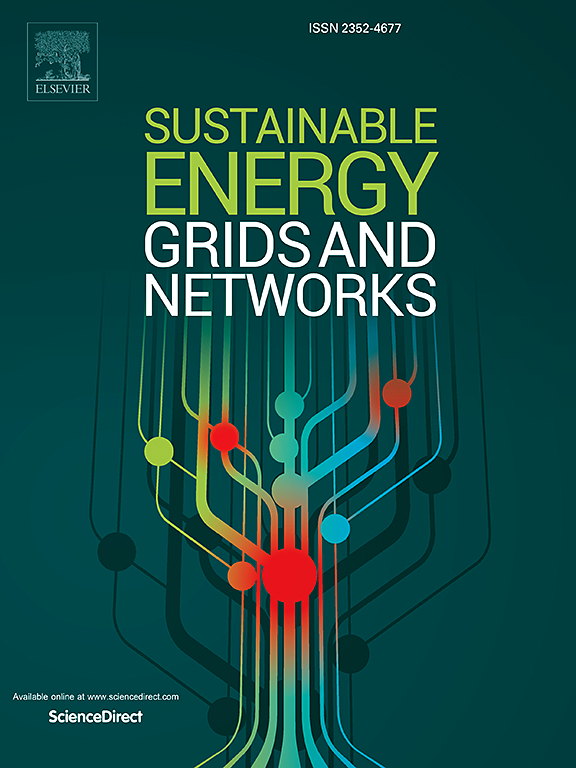Robust transmission-constrained unit commitment considering robust economic redispatch: A tri-stage five-level structure
IF 4.8
2区 工程技术
Q2 ENERGY & FUELS
引用次数: 0
Abstract
Integrating renewable energy sources (RESs) into power systems increases operational uncertainty and threatens their efficiency. Hence, it is imperative to devise effective techniques to handle the uncertainty and mitigate the variability impacts of RESs in a transmission-constrained unit commitment (TCUC) problem. We propose a novel robust TCUC (RTCUC) model considering the robust economic redispatch (RERD) problem (balancing problem). To this end, a tri-stage, five-level hierarchical framework is constructed with two successive min-max-min structures. A conventional RTCUC problem is formulated as a min-max-min problem where the first stage decides on commitment statuses, and the second stage determines the generation scheduling using an economic dispatch model. In this paper, we change this conventional model by revisiting the second stage and formulating it as another min-max-min problem whose first stage determines the optimal base generation. Its second stage identifies the optimal generation re-scheduling (GRS) solution using an economic redispatch model. Thus, the whole problem is established based on a tri-stage min-max-min-max-min structure. The proposed problem is solved using the nested primal Benders decomposition (PBD) algorithm. The numerical studies reveal the outperformance of the proposed RTCUC model over the conventional models.
考虑稳健经济再调度的稳健输电约束机组承诺:一个三阶段五层结构
将可再生能源(RESs)整合到电力系统中增加了运行的不确定性,并威胁到其效率。因此,必须设计有效的技术来处理传输约束单元承诺(TCUC)问题中RESs的不确定性并减轻其可变性影响。考虑稳健经济再分配(rrd)问题(平衡问题),提出了一种新的稳健TCUC模型。为此,用两个连续的最小-最大-最小结构构造了一个三阶段、五层的分层框架。将传统的RTCUC问题表述为最小-最大-最小问题,其中第一阶段确定承诺状态,第二阶段采用经济调度模型确定发电计划。在本文中,我们改变了这一传统模型,重新审视了第二阶段,并将其表述为另一个最小-最大-最小问题,其第一阶段决定最优基生成。第二阶段利用经济再调度模型确定最优的发电再调度方案。因此,整个问题建立在三阶段最小-最大-最小-最大-最小结构的基础上。该问题采用嵌套原始Benders分解(PBD)算法求解。数值研究表明,所提出的RTCUC模型优于传统模型。
本文章由计算机程序翻译,如有差异,请以英文原文为准。
求助全文
约1分钟内获得全文
求助全文
来源期刊

Sustainable Energy Grids & Networks
Energy-Energy Engineering and Power Technology
CiteScore
7.90
自引率
13.00%
发文量
206
审稿时长
49 days
期刊介绍:
Sustainable Energy, Grids and Networks (SEGAN)is an international peer-reviewed publication for theoretical and applied research dealing with energy, information grids and power networks, including smart grids from super to micro grid scales. SEGAN welcomes papers describing fundamental advances in mathematical, statistical or computational methods with application to power and energy systems, as well as papers on applications, computation and modeling in the areas of electrical and energy systems with coupled information and communication technologies.
 求助内容:
求助内容: 应助结果提醒方式:
应助结果提醒方式:


